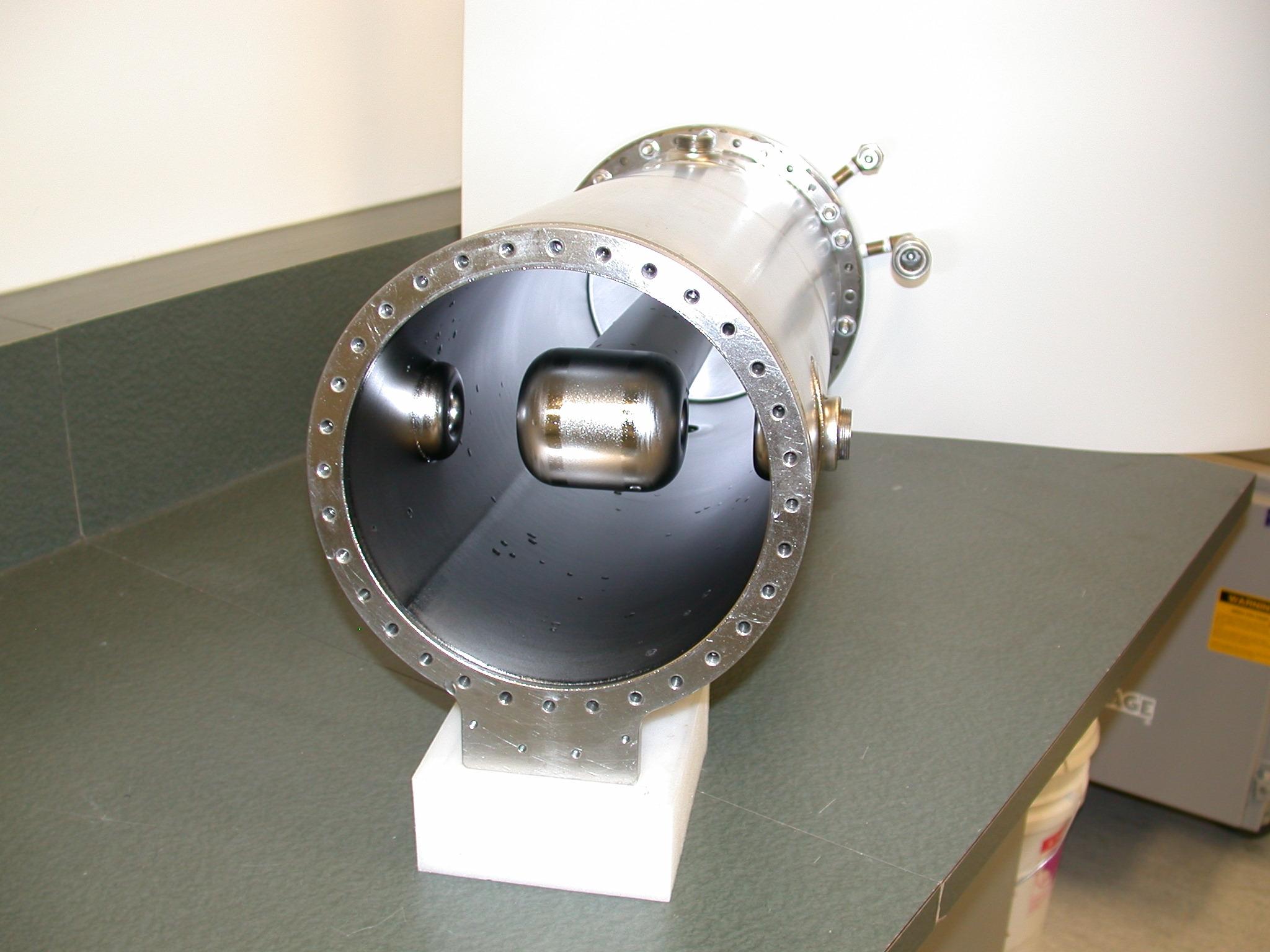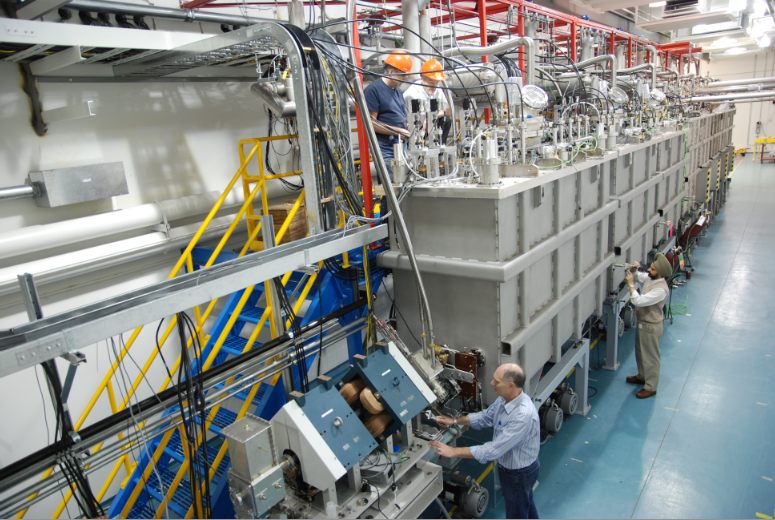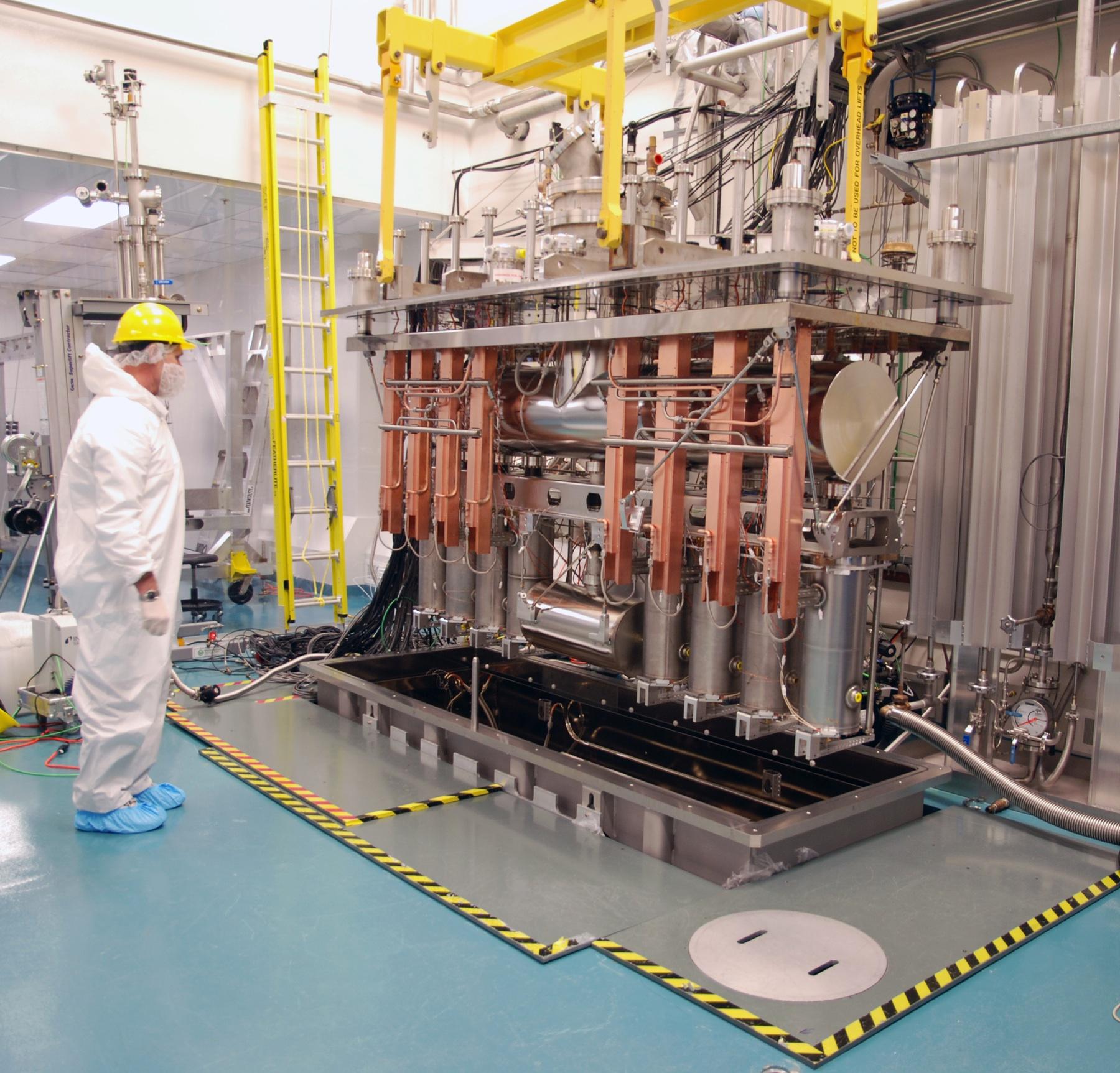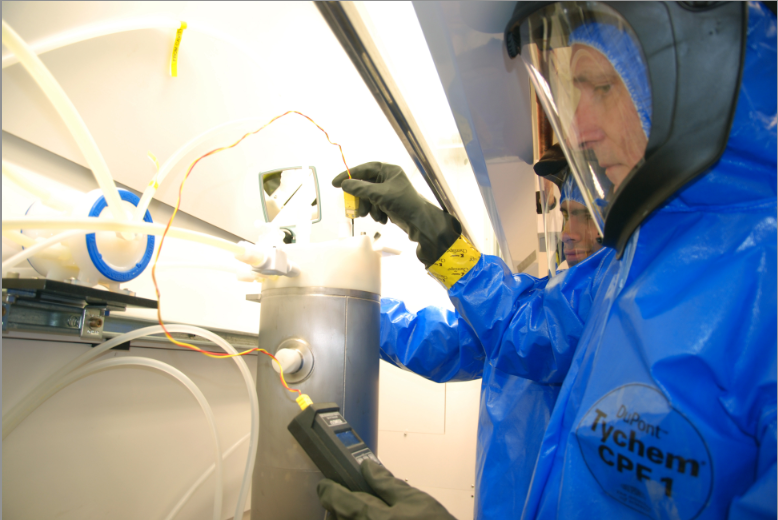Above: Three cryomodules in the ISAC-II vault. |
The TRIUMF Accelerator Division has reached another important milestone. On March 31, as the TRIUMF five year plan came to an end, the energy of the ISAC-II superconducting linac was doubled with the completion of the Phase II upgrade. TRIUMF began developing superconducting heavy ion accelerator technology in 2001 and is now a leader in the field. The ISAC-II facility acts as an energy booster to the radioactive ion beams produced in the ISAC facility, delivering rare isotopes to experiments such as TIGRESS and EMMA.
The facility has been installed in phases. The first phase, consisting of the addition of five cryomodules and twenty cavities, was commissioned in 2006. The second phase consisting of twenty more accelerating cavities housed in three cryomodules has just been completed on schedule and on budget to coincide with the end of TRIUMF’s fiscal year. TRIUMF is now moving forward with the acceleration of rare isotopes to higher energies, allowing nuclear physics studies beyond the Coulomb barrier!
The accelerating modules consist of superconducting structures (cavities) that accelerate the beam using electromagnetic energy oscillating at 100 million times a second. The cavities are fabricated from highly refined niobium a superconductor at temperatures less than 9K. Consequently the cavities produce the high fields with almost no power loss. The first phase of linac installation utilized cavities fabricated in Italy. In the second phase TRIUMF collaborated with a local company PAVAC Industries Inc., of Richmond BC to master the difficult technology. The first successful fabrication and cold-test of a cavity in April 2008 put PAVAC, TRIUMF and Canada on the map as a member of an elite group of industrial teams capable of manufacturing next-generation accelerator technology. PAVAC is the first Canadian company ever to produce bulk niobium superconducting cavities. Now twenty PAVAC cavities are installed in the ISAC-II linac.
We salute the entire team of scientists, engineers, and technicians at TRIUMF and PAVAC who made this upgrade to ISAC-II happen. The new scientific capabilities will be exploited later this month. The first experiment to be using the new accelerating energy will be “Lifetime measurement of 6.791 state in 15O”.
 | ||
Left: The cavity produces strong electromagnetic fields that boost the energy of electrically charged ions as they pass through. The cavity is fabricated from pure niobium that when cooled to near absolute zero becomes a superconductor and the electromagnetic fields can be produced with almost no power loss for highly efficient acceleration. A series of these cavities are put together in a thermos like box enclosure called a cryomodule. Middle: Assembling a cryomodule in the clean room. Cavities are visible. Right: Chemically etching the cavity before installation in the cryomodule to superclean the conducting surfaces. | ||
-- Melissa M. Baluk, Communications Assistant with special thanks to Bob Laxdal.



